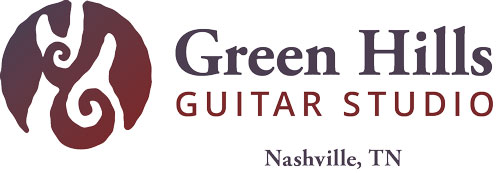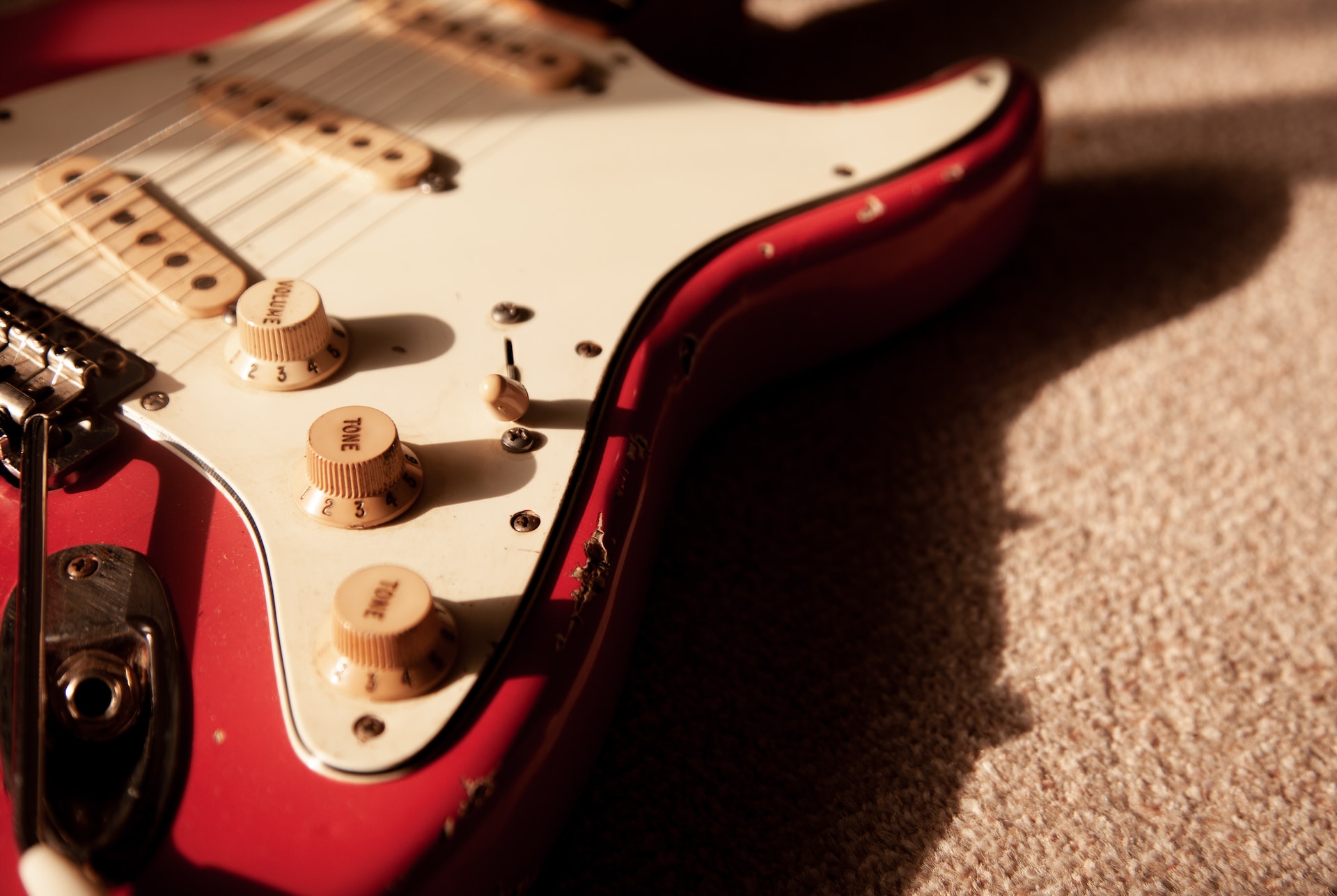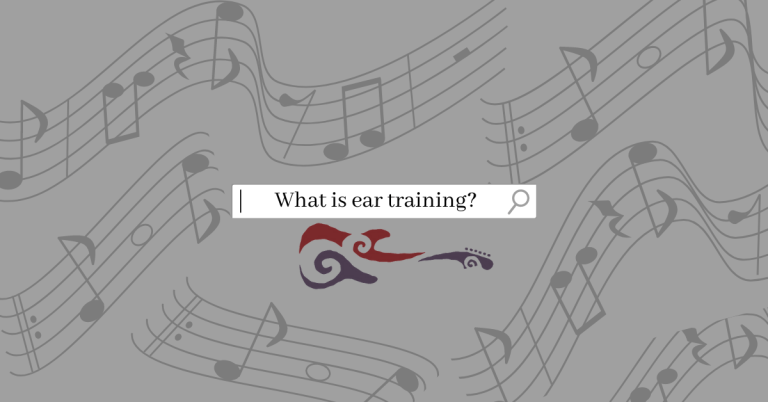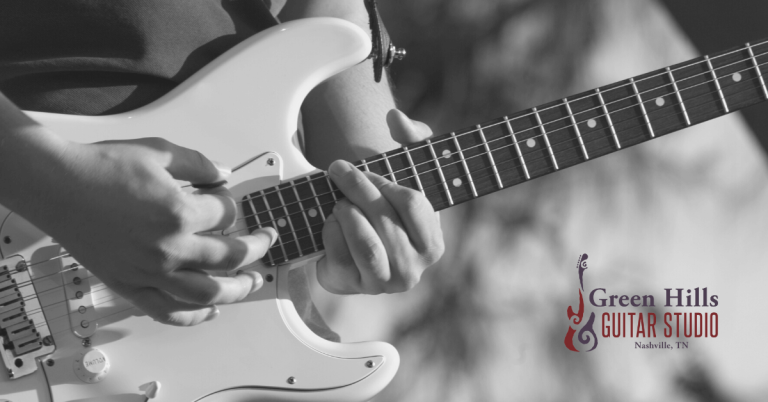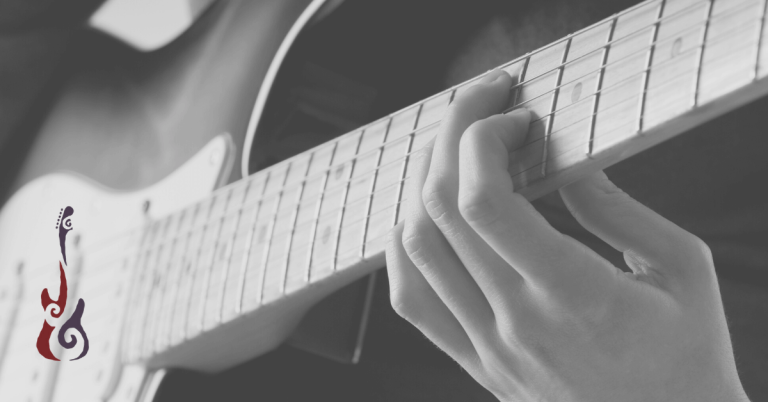Exploring Guitar Triads, Part 1
Triads are the cornerstone of your growth as a guitar player. These versatile musical building blocks not only elevate your rhythm guitar skills but also supercharge your lead guitar prowess. Triads are the essence of music, playing a pivotal role in shaping the sonic tapestry of various musical genres.
In this blog post, we’ll embark on a journey into the fascinating realm of triads, focusing on major, minor, diminished, and augmented triads and their application on the 3rd, 2nd, and 1st strings of your guitar.
But that’s not all. We’ll take a deep dive into the concepts of root position, first inversion, and second inversion, equipping you with a holistic grasp of these foundational musical elements and their real-world applications across diverse music styles.
Best of all, you can put this newfound knowledge to immediate use, injecting fresh creativity into your guitar playing. Plus, stay tuned as we unveil the significance of slash chords in chord progressions, a vital insight for both crafting guitar parts and taking your solos to the next level.
Ready to improve your guitar game with the power of triads? Let’s dive in!
Triads: The Essential Building Blocks of Harmony
Triads are the simplest form of chords, consisting of three notes: the root, the third, and the fifth. These notes are typically stacked in thirds, meaning that the second note is a third above the root, and the third note is a third above the second note. The quality of a triad (whether it’s major, minor, diminished, or augmented) is determined by the intervals between these notes.
Major Triad
The major triad is a cornerstone of musical harmony, comprising the root (1), major third (3), and perfect fifth (5). Take a moment to envision a C major triad: C (1), E (3), and G (5). Mastering this fundamental triad is your gateway to unlocking the richness of major chords on the guitar.
Minor Triad
The minor triad, with its root (1), minor third (b3), and perfect fifth (5), introduces a touch of melancholy and depth. Picture a C minor triad: C (1), Eb (b3), and G (5). Delve into its emotional complexity and discover how it complements various musical genres.
Diminished Triad
The diminished triad, shrouded in mystery, features the root (1), minor third (b3), and diminished fifth (b5). In the case of a C diminished triad, you’ll encounter C (1), Eb (b3), and Gb (b5). Dive into the unique character of this triad and embrace its dissonant allure.
Augmented Triad
The augmented triad boasts a root (1), major third (3), and augmented fifth (#5). Transitioning from a major triad to an augmented one is as simple as raising the fifth note by a half step. For instance, a C augmented triad comprises C (1), E (3), and G# (#5). Explore the ethereal and vibrant qualities of this triad to add a mystical dimension to your guitar playing.
Triads on Guitar: Practical Application and Practice Tips
Now that we’ve grasped the fundamentals of triad types, let’s delve into their practical application on the guitar’s 3rd, 2nd, and 1st strings. This approach simplifies the visualization and navigation of the guitar neck.
I recommend printing multiple copies of the neck diagram below and dedicating daily practice to filling in the notes on strings 3, 2, and 1. Simply memorizing fret positions won’t suffice. The ability to locate notes on the neck and understand their relationships with chord shapes and their functions is of utmost significance. Over time, you’ll be able to do this purely from memory.
Memorizing the triad shapes is a great starting point for understanding music theory, but it’s not the final destination. I urge you to challenge yourself daily to commit these shapes and inversions to memory and start identifying and naming the individual notes within each chord as you maneuver them across the neck.
Triad Inversions: Improve Your Harmonic Understanding
Triads form the bedrock of harmonic understanding on the guitar, and mastering their inversions is the gateway to unlocking a world of musical possibilities. This section delves deep into triad inversions. By learning how to reorganize the notes within these fundamental chords, you’ll gain the power to create captivating melodies, harmonies, and chord progressions that add depth and complexity to your playing.
Root Position Triads
Root position triads are the most basic form of triads, with the root note as the lowest pitch. When playing these on strings 3, 2, and 1, you can see the following patterns on the first row of the PDF below. I have written in the fingerings for each chord, and I have circled the root of each chord in red. It is really important to start identifying the notes of each shape. It is also important to know where to play these notes on the guitar neck.
First Inversion Triads
In first inversion triads, the third of the chord is the lowest note. This creates a different tonal color compared to the root position triads. Again, look at the PDF below. On the second row, you will find the fingerings for these first inversion chords. I have written the 3rds below the chord diagrams using light blue.
Second Inversion Triads
In second inversion triads, the fifth of the chord is the lowest note. This inversion creates a unique and sometimes brighter sound. Continuing with the same PDF, look at the third row of chords diagrams. Along with locating the Root note and the different 3rds, you want to start paying attention to the 5ths of these chords. I have noted them in purple below the chord diagrams.
Slash Chords and Chord Inversions
Slash chords and chord inversions add depth and complexity to your chord progressions and soloing. Understanding these concepts is essential for creating more interesting and expressive music.
Slash Chords
A slash chord is a chord notation that indicates a specific bass note over a different chord. For example, C/G represents a C major chord with G as the bass note. Slash chords can add a richer harmonic palette to your compositions and arrangements.
Slash chords can be considered a way to introduce inversions into your playing. When you see a slash chord, you’re essentially playing an inversion of the chord with a different bass note.
Chord Inversions
Chord inversions involve rearranging the order of the notes in a chord so that a note other than the root is the lowest note. Inversions can create smoother voice leading in chord progressions and adding subtle variations to your chord voicings.
Understanding and using chord inversions is particularly valuable in rhythm playing and soloing. Inversions allow you to find new and unique ways to connect chord tones when improvising, resulting in more melodic and interesting solos.
The Importance of Learning the Different Types of Triad Shapes
Learning triad shapes and their inversions on the guitar neck is crucial for several reasons:
1. Chord Progressions
Triads and their inversions give you a wide range of chord voicings to choose from when creating chord progressions. This versatility allows you to craft unique and captivating chord sequences that can elevate your compositions or arrangements.
For instance, experimenting with different triad inversions in a progression can make the transitions between chords smoother and more musically pleasing. This can be especially beneficial when playing in genres emphasizing intricate chord changes, such as jazz or progressive rock.
2. Soloing
Triad shapes and inversions provide excellent frameworks for soloing. By knowing the location of triads on the fretboard, you can effortlessly connect chord tones while improvising, creating more melodically coherent and
Application in Different Styles
Now that we’ve covered the basics of these triads on the guitar neck let’s explore how they are used in various styles of music:
Rock and Pop
Major and minor triads are staples in rock and pop music. Power chords, which are essentially root position major or minor triads, are frequently used to create a driving and powerful sound. You’ll often find these chords played on the lower strings of the guitar, providing a strong foundation for the music.
Jazz
Jazz guitarists often use extended chords, but triads are still essential for creating melodic and harmonic structures. In jazz, you might encounter more complex voicings of these triads, including inversions, to add color and complexity to chord progressions.
Classical
Classical guitarists make extensive use of triads, especially in arpeggio patterns. These patterns involve playing the individual notes of a chord in a sequence, which creates a beautiful and flowing sound. Triads in classical music often emphasize voice leading and smooth transitions between chords.
Blues
In blues, both major and minor triads are used to create the classic bluesy sound. Guitarists might use these triads to embellish their solos or as the basis for rhythm guitar parts. The expressive bends and slides in blues guitar playing can also be applied to triads, adding a unique flavor to the music.
Fusion and Experimental
In fusion and experimental music, guitarists often explore the full spectrum of triads, including diminished and augmented triads, to create dissonance and tension. These styles encourage experimentation and pushing the boundaries of traditional harmony.
The Coda
I am currently creating a course that will provide exercises, quizzes, demonstrations, and applications of this information. Please sign up for our newsletter to receive info on course releases, discounts, and more.
And don’t hesitate to get in touch if you’re interested in taking private lessons. We offer guitar lessons online or in-person at our two locations in Nashville, TN.
Have fun!
Shane
